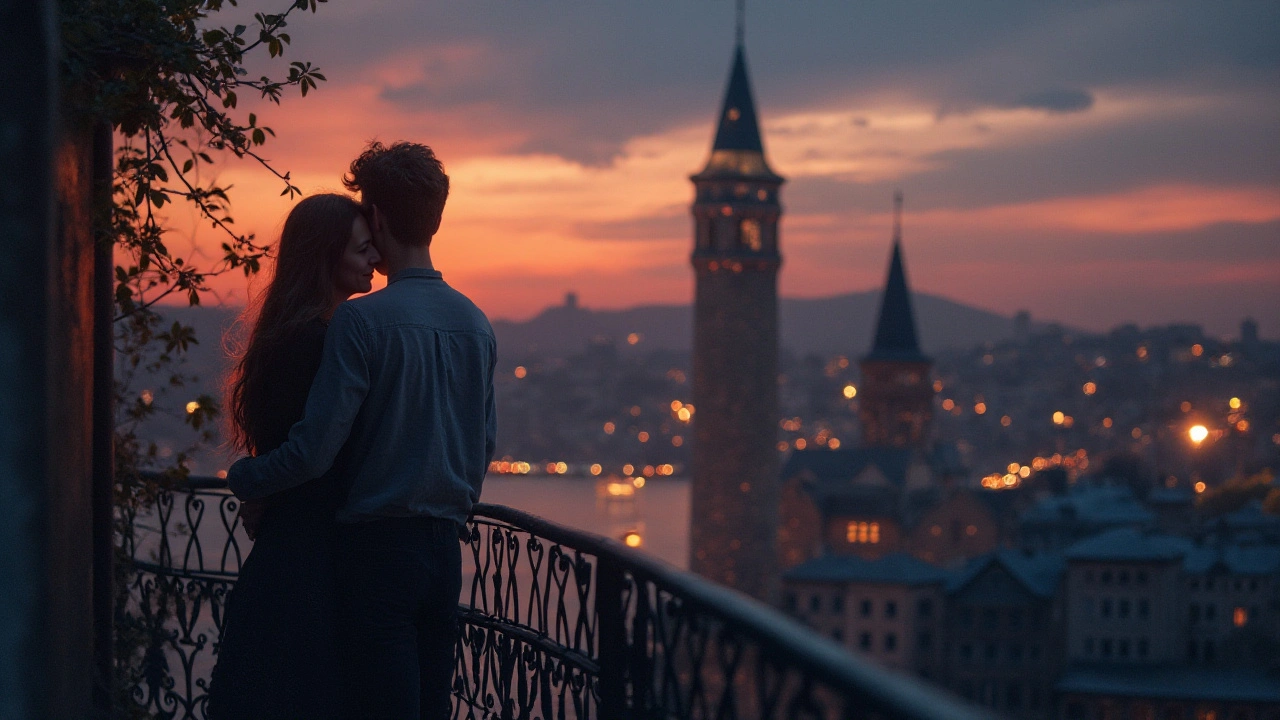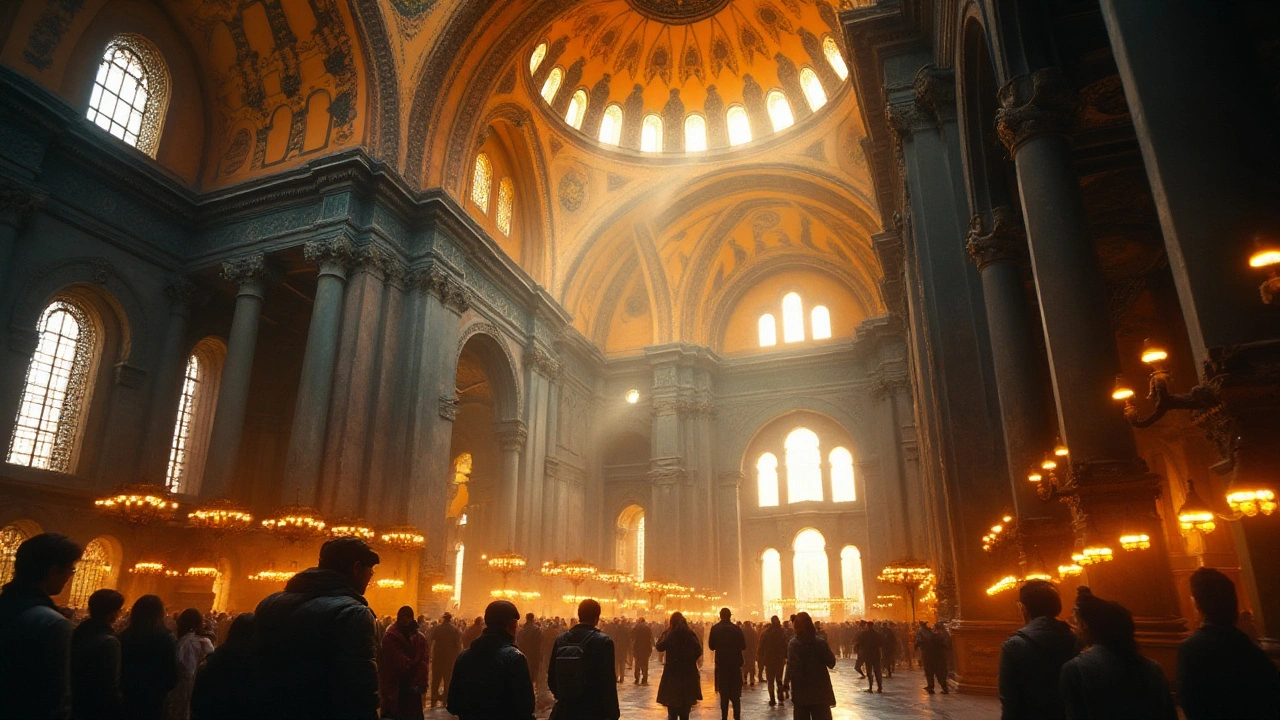Discovering the Intriguing Secrets of Istanbul's Dolmabahçe Palace
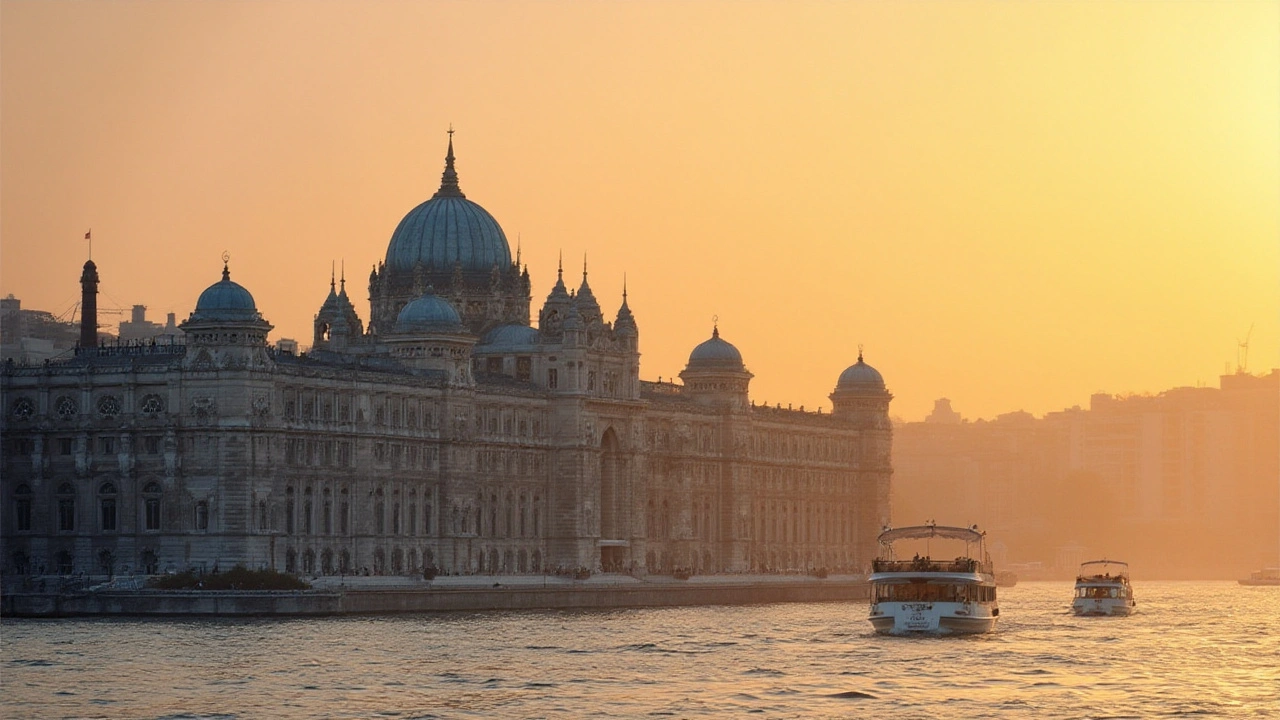
In Istanbul, a city where history and modernity intertwine, the Dolmabahçe Palace remains an exquisite gem along the Bosphorus Strait. As I wandered through its lavish halls, the air seemed to whisper tales of seduction and power, woven into the very fabric of this palatial wonder.
The palace, with its alluring blend of neoclassical and Ottoman elements, draws the curious visitor into a journey that is as much about the senses as it is about understanding the past. Each room offers a narrative, a story etched into its walls, inviting you to explore deeper into the city's intricate cultural layers.
Here in Istanbul, the Dolmabahçe Palace isn't just a monument of grandeur; it's a pulsating heartbeat of history, a place where whispers of ancient seduction accompany the rustle of silk and the tactile caress of timeworn stone underfoot. Let's unravel its eternal mysteries together.
- The Historical Canvas of Dolmabahçe
- Architectural Marvels and Intricate Designs
- Cultural Influences and Sensual Narratives
- Dolmabahçe Palace in Modern Istanbul
The Historical Canvas of Dolmabahçe
The first time I laid eyes on the Dolmabahçe Palace, it wasn't just the grandiosity that seized my attention, but the sense of history etched into its very essence. Built in the mid-19th century by Sultan Abdulmejid I, this magnificent palace was a bold departure from traditional Ottoman architecture, emblematic of an era where east flirted brazenly with west. The European influences were unmistakable, a captivating amalgam of Baroque, Rococo, and Neoclassical styles, all intertwined with subtle Ottoman finesse. Walking through its halls, a tapestry of stories unfolds—a whispered legacy of power, opulence, and ambition, echoing through its gilded ballrooms and intricate salons.
The setting itself was once a bay, a haven for the Ottoman fleet, before being filled ('dolma' in Turkish means filled) and transformed into a lush garden. It's no coincidence that Dolmabahçe, meaning 'filled garden,' evokes images of a paradise, a testament to human creativity and resolve. As I explored the palace, I couldn't help but imagine the sultans orchestrating their affairs of state from these opulent rooms, the chandeliers overhead reflecting shards of light like diamonds spilled across the floors. On nights when Istanbul was shrouded in darkness, did these lights blaze like a luminous beacon across the Bosphorus, a silent declaration of power and prosperity?
The massive ceremonial hall whispers tales of grandeur. It's a space designed to impress, to flaunt the might of the Ottoman Empire to foreign dignitaries—a bold, brazen expression of confidence that echoes still. When I touch the cool marble columns, I can almost feel the pulse of history, a tactile connection to those who came before. The palace has witnessed splendid ascensions and tragic downfalls, from the lavish banquets of the Ottoman court to the somber passing of Mustafa Kemal Atatürk, the founding father of modern Turkey. He spent his final days here, in a room overlooking the Bosphorus, the rhythmic lap of waves perhaps a comfort as he slipped into eternity.
Dolmabahçe Palace embodies the spirit of Istanbul itself—a city where worlds intermingle and dance, creating a unique cultural symphony. As I recount my visit, Istanbul's essence seems to seep into my senses, drawing me closer to its heart. The palace stands as both a house of splendour and a silent observer, cradled on the shoulders of empires, capturing the heartbeats of past and present.
Birgül Açıkgöz, a respected Turkish historian, once described Dolmabahçe as, "a living museum where Ottoman dreams met European ideals under the watchful eyes of a burgeoning Turkish republic."This dance of east and west, past and future, continues, inviting each visitor to feel its history, its heart—you simply have to open yourself to the experience.
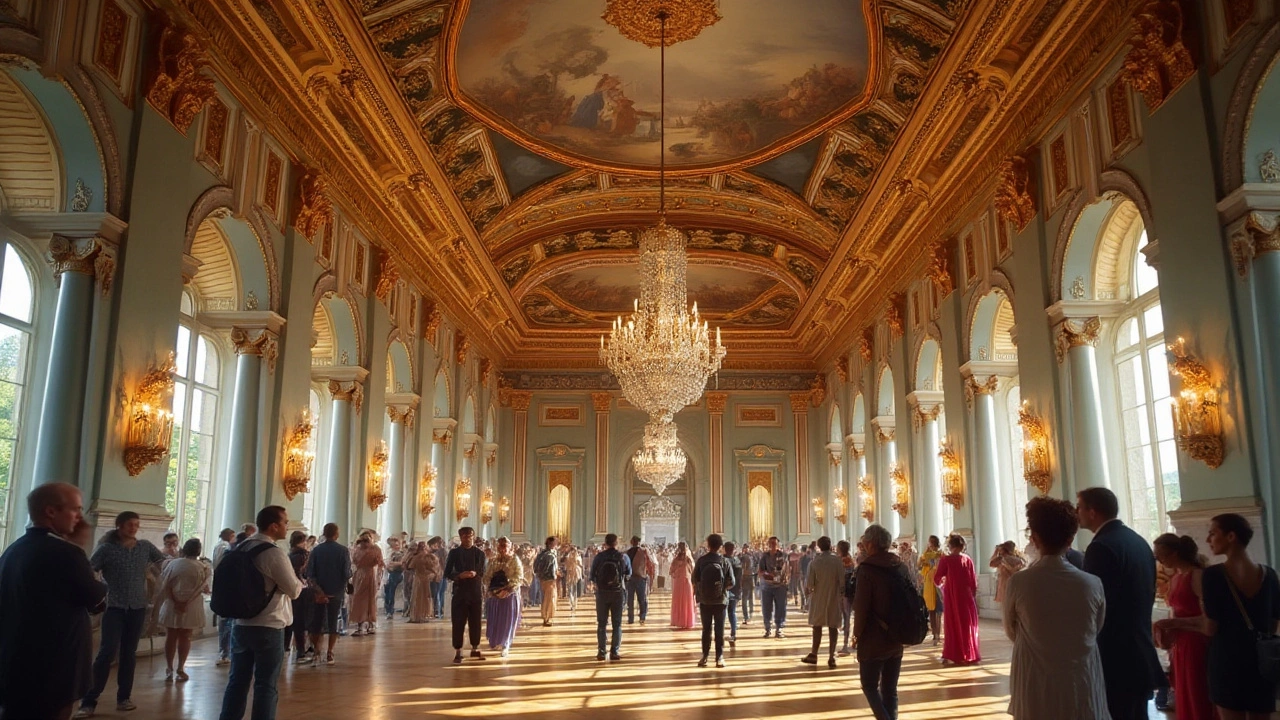
Architectural Marvels and Intricate Designs
The Dolmabahçe Palace, a magnificent spectacle on the cusp of the Bosphorus, beckons with its majestic European influences interwoven with Ottoman grace. I found myself immediately entranced by its intricacies, the dissolution of time palpable as the towering gates of iron parted ceremoniously, revealing splendor unrivaled in its century. The palace's opulence is a flirtation with the senses, an orchestration of marble and gold, where the light glides seductively over elaborate patterns, casting a warm glow that whispers of secrets harbored within its walls.
As I moved through the regal halls, each chandelier seemed suspended in an eternal dance, a testament to the world's largest collection of crystals. Here, Western baroque blends harmoniously with Eastern mysticism, a reflection of the sultans' desires to embrace both worlds in their haven. The palace flaunts its grandeur unapologetically; each room is a canvas drenched in art, where the carpets' intricate patterns mimic the swirling motifs of Turkish folklore — a delicate balance between order and chaos. This interplay of aesthetics invites one to lose themselves in a tactile symphony of sight and touch, each surface urging an exploration deeper into the fusion of past and present.
The design of the Dolmabahçe Palace speaks a universal language of allure and decadence, a fantasy land where every corner boasts a story waiting to be uncovered by the keen observer. The famed Muayede Hall, where gilded ceilings soar, encapsulates a sphere of reverence and awe, its height a vertical embrace that seems almost scandalous in its magnitude. It was here that I imagined the sultans' opulent gatherings, their whispers echoing off the marble floors, and where the very air feels heavy with the aroma of ages past and passions ignited. Amidst this overwhelming beauty, the harem quarters reveal a more intimate narrative, extending an invitation into the sultans' private worlds, lives laced with intrigue and desire.
The very walls seem to murmur the thoughts of those who once walked these corridors, as famed Turkish poet Nazım Hikmet once reflected, 'Be proud-hearted as the most valiant of rose-garden foxes, / it is true that the rebellion will be your prison, not your home.'This architectural prowess is not just about the stones, but about the captivating narratives etched into them, a reminder of a time when the boundaries of reality and dream were artfully blurred.
In this spacious creation left by an empire at its zenith, the captivating allure of the Dolmabahçe Palace lies not only in its grandeur but in the warmth exuded by its intricate designs. It compels each visitor, local and foreign alike, to reflect on Istanbul's unique blend of East and West — a city where civilizations have danced through time, leaving behind a rich tapestry that the palace proudly showcases. It is in these spaces that history and artistry form a timeless bond, embracing those who walk through its halls, bringing them tantalizingly close to the essence of a bygone era.
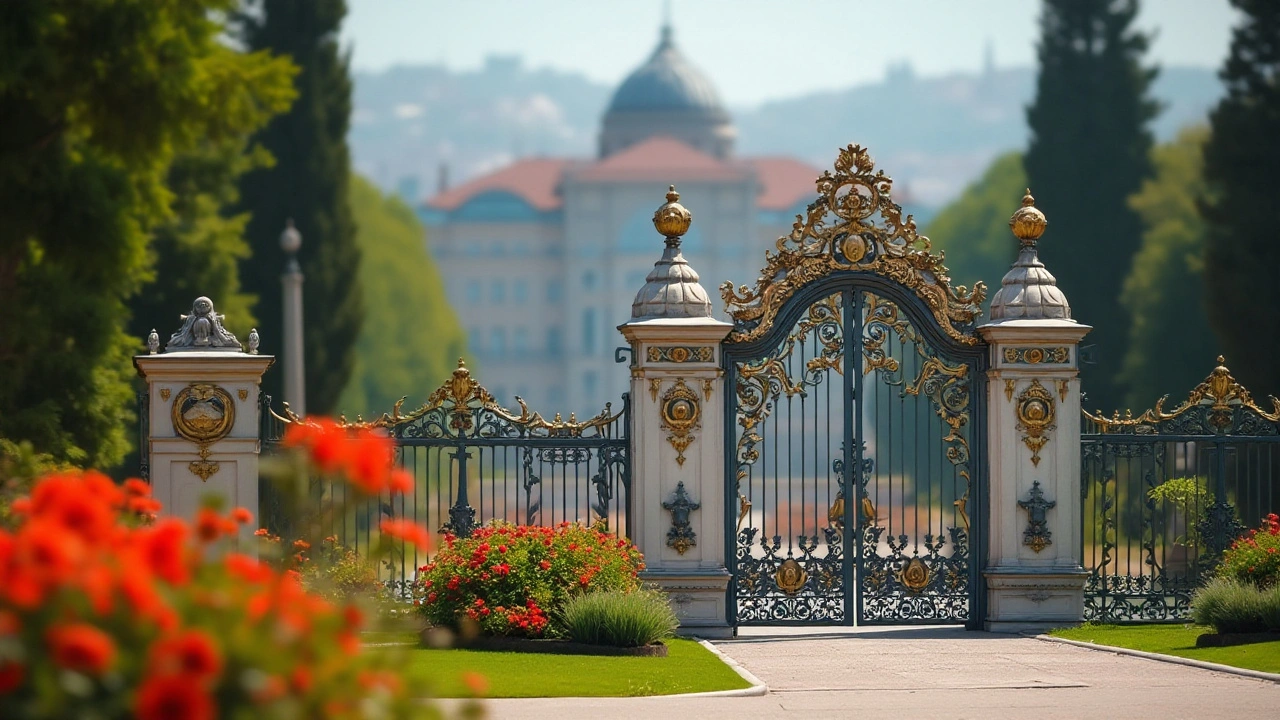
Cultural Influences and Sensual Narratives
Stepping into Dolmabahçe Palace, one is enveloped by an atmosphere heavy with the exotic and the forbidden, a tapestry woven as much from the seductive whispers of Istanbul’s diverse past as from the lush fabrics that drape the rooms. The air feels different here—charged with an intimacy that echoes the harem's quiet mysteries, yet vibrant with the confluence of east and west, much like the waters of the nearby Bosphorus. Here, you can almost hear the rustle of silk garments of those who once graced these halls, their stories lingering in the corners like forgotten lovers.
The palace is a living narrative of Ottoman architecture and European elegance, a dance of cultural exchange as intricate as the daintiest embroidery on the sultans’ robes. Built in the 19th century as a bid to modernize and impress, Sultan Abdülmecid I commissioned the palace not just as a residence but as a statement—an opulent fusion where Baroque and Rococo meet Ottoman traditions. As I treaded the marbled halls, I could sense the sultan's ambition, an alluring blend of power and refinement embodied in each archway and ornate ceiling. This was the age where the Ottoman Empire was courting Europe, and Dolmabahçe was the grandest dowry.
Wherever you turn, you can see the cultural influences that permeate this place—the extravagant chandeliers glistening as if they held secrets, the gilded mirrors reflecting not just images but legacies. The ceiling of the ceremonial hall is perhaps the most evocative. Painted with a swirling dreamscape, it speaks of celestial romance, a sky not just to gaze upon but to dream under. It is these elements that tell the story of a palace that once witnessed treaties and betrayals, dances and whispers of love, and the confident steps of those who dared to claim it as their own, then humbly bowed to the stories birthed within these walls.
"Dolmabahçe is not just a palace; it’s a testament to a dream, a dream that attempted to capture the soul of a sprawling empire in bricks and mortar." — Orhan Pamuk, Turkish novelist
The Turkish culture, with its deep roots and sensual undertones, seeps into the place, making it unforgettable. It is in the quiet moments, standing before the sultan’s bedroom, imagining the moments of solitude and introspection amidst the lavish surroundings, that I felt the strongest sense of Istanbul's timeless allure. Here was a space that allowed one to pause, to reflect. The walls breathe with history, imbued with the aromatic past of Ottoman spices carried on Istanbul's winds, mixing with the heady perfume of European influence. These sensual narratives not only tell of the past but weave into the present, becoming an integral part of the vibrant tapestry that is Istanbul today.

Dolmabahçe Palace in Modern Istanbul
As I strolled through the majestic halls of the Dolmabahçe Palace, I couldn't help but feel the pulse of modern Istanbul beating subtly beneath its storied façade. This is a place where past and present mingle with a seductive flair, echoing the city's own character as a bridge between continents and cultures. Today, the palace stands not only as a testament to the opulence of the Ottoman era but also as a canvas reflecting Turkey's journey into the modern age.
Visitors flock to the palace to glimpse its awe-inspiring architectural feats, which seamlessly fuse Baroque, Rococo, and Neoclassical styles with traditional Ottoman motifs. It's a dance of aesthetic dialogue, where European influences intertwine with the intricacies of Turkish artistry. Yet, what truly captivates is the way these physical spaces host the ongoing conversations of Istanbul's inhabitants—those who live, breathe, and tell stories that overlay the ancient whispers within these walls.
In many ways, Dolmabahçe is a microcosm of modern Istanbul itself. The palace, with its intimate view of the shimmering Bosphorus, serves as a popular venue for state ceremonies, highlighting Turkey's strategic geopolitical position. It's even been the backdrop for cutting-edge cultural festivals, where contemporary art installations and performances often blend the sensuality of the past with the provocative edge of the present. At times, the very air of the palace feels charged with an electric anticipation of what modern creators will envision in a space so syruped with history.
"Istanbul changes every moment," author Orhan Pamuk once said, capturing the essence of a city forever in motion. "It is not a museum and not frozen in time."
Imagine attending a fashion show in the world's largest chandelier-lit hall, with the sound of Istanbul traffic a comforting background hum. Or perhaps sitting in the lush palace gardens, the scent of jasmine mixing with the salty breeze of the Bosphorus, watching the sun dip below the horizon in hues that every lover of the east and west could appreciate. It's a sensory journey that those who find themselves in Istanbul cherish deeply.
One can't deny the importance of preserving such historic sites, yet the key lies in celebrating and utilizing their beauty responsibly. As the global eye focuses increasingly on sustainable tourism, Dolmabahçe's legacy is not merely a precious inheritance but a living entity, one that must continue to engage with the life experiences of new generations. The palace, standing imperiously yet invitingly, beckons the curious soul to explore not just the treasure of its rooms but the rich tapestry of Istanbul's identity in an era of unprecedented change.
